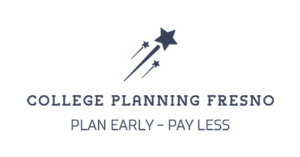How To Know What To Spend on College
It’s a simple plan: Invest money in a college education now, and your child increases his or her earning power over their lifetime.
After all, on average, those with college degrees still earn a lot more than those without four-year degrees.
Still, as the cost of obtaining that college degree gets increasingly higher, more and more families are having to think outside of the box when it comes to approaching that cost.
Everyone wants the best education for the lowest price.
That’s because it’s tough to weigh the financial return of a college education – which may not occur until years after your student has graduated – against a hefty tuition bill that’s going to arrive right now.
But here’s something to keep in mind, as reported by The Wall Street Journal.
When a family opts for a less expensive school (which oftentimes offers a different level of education), after they’ve qualified for a more selective (and almost always more expensive) school, a startling statistic is revealed:
The student stands a 20% less chance of graduating.
The reasons for that vary. One is that the student may be less motivated, less challenged, and less likely to apply themselves to their course work.
But how much is too much to spend? And what about loans?
The prevailing wisdom on how much student loan debt your future graduate should take on is that the final balance should never exceed the student’s expected income in their first decade out of school.
For example, if a student’s expected annual income for those first ten years is $60,000, then they should be carrying less than $60k when they graduate.
Here’s the math on that if a student spends those ten years applying 10% of their gross income to loans, it could seriously inhibit their ability to save for and purchase other things, like a car or home.
What’s more – if taxes wipe out 25% of that gross income while the graduate is attempting to save 15% of it for those future needs, that leaves 60% for everything else.
Take away another 10% for student loans, and now they’re left with less than half of their income for living expenses.
And of course, this is yet another reason why it’s so important to try to rustle up as much “free” money for college as possible… money your student won’t have to pay back.
Scholarships, private grants, and federal financial aid all fall into this category. It is essential that you learn how to go after scholarships correctly and how to get the most financial aid possible for your specific situation.
In the end, when deciding how much to pay for college, the answer is one that’s wholly specific to your situation. But keep in mind these key questions. How much debt can you realistically expect your child to take on upon graduation?
• How much of an impact can a higher-priced school’s education have on that student’s future as opposed to what’s offered at a lower-priced school?
• And how much can you afford to pay without forcing your student to negatively impact their studies by chipping in too?
If you can determine the answers to these questions, you’ll be on a much clearer path to figuring out what your tuition bottom line should be.
A Unique Opportunity
You may not find this opportunity anywhere else in the college planning space.
It’s an “inside look” at your college funding situation with an authorized college funding advisor – absolutely free.
We’ll help you figure out where you stand, including whether or not you can lower your expected family contribution (EFC) – and maximize your eligibility for financial aid. What’s more – you set the date and time for the call.
Sign up for your free, no obligation consultation by following this link.
(It’s important to recognize that individual circumstances and efforts can significantly impact outcomes. Engagement and commitment from both the family and student are indeed crucial factors in achieving positive results. The advice and direction provided by CPN (College Planning Network) and CPF (College Planning Fresno) can serve as valuable guidance, but ultimately, it’s up to the individuals involved to actively participate and implement the recommendations effectively.)

